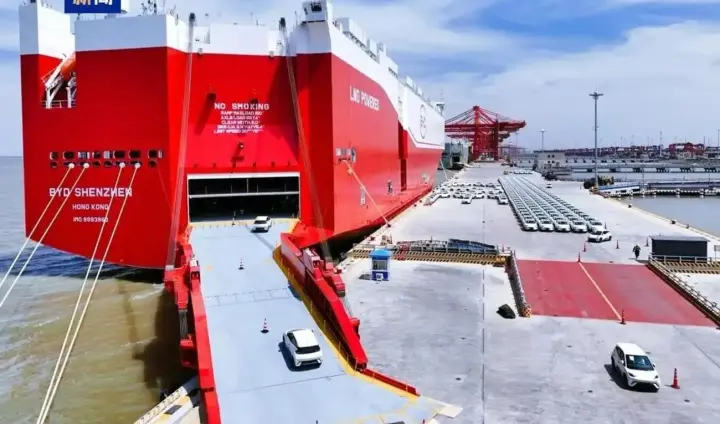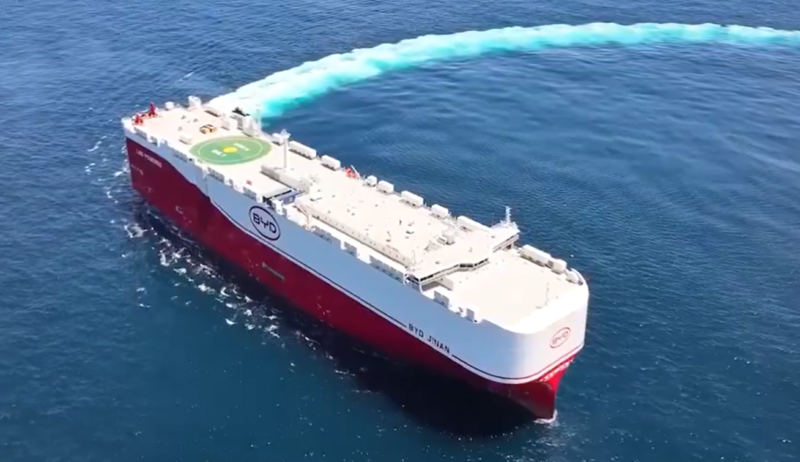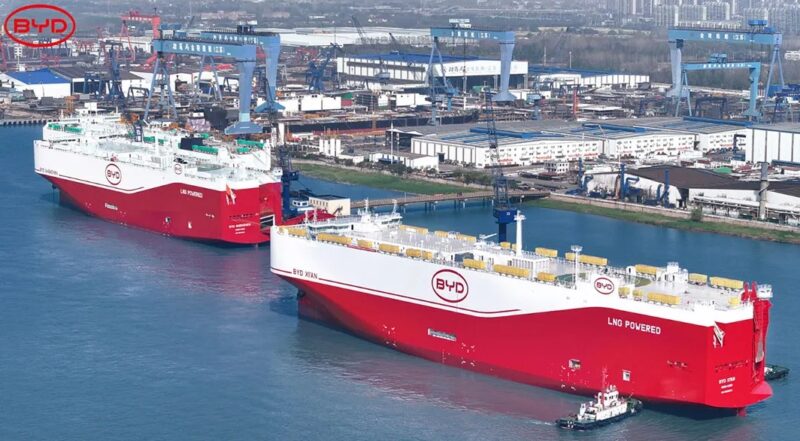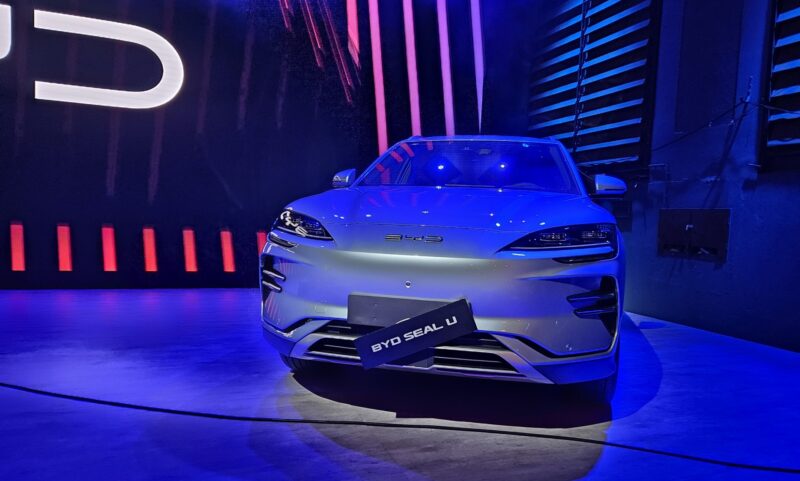BYD completed its massive fleet, now able to export 1 million cars a year. But not just from China
BYD completed its massive fleet of eight vessels and reached an annual transport capacity of over 1 million cars. The final car carrier to join the fleet, BYD Jinan, went into operation last week, the company announced on WeChat.
The Shenzhen-based automaker completed the fleet in under two years. The first vessel, BYD Explorer No. 1, was delivered in January 2024.
All the car carriers are RoRo ships, meaning they are designed to carry wheeled cargo – the vehicles roll on/roll off themselves without the need for containers. BYD ships have a capacity of 7,200 or 9,000 cars based on the type of vessel.

The BYD fleet list:
- BYD Explorer No.1
- BYD Hefei
- BYD Changzhou
- BYD Shenzhen
- BYD Xi’an
- BYD Changsha
- BYD Zhengzhou
- BYD Jinan
Aside from the newly launched Jinan, all seven ships are already supplying the world with BYD products. BYD Hefei is currently unloading cars in Europe before returning to China. BYD Xi’an is expected to arrive in Barcelona later this week. BYD Shenzhen and Changsha are also on their way from China to Europe.

But BYD is not exporting just China-made cars. BYD Zhengzhou, with a capacity of 7,000 vehicles, brought BYD right-hand drive cars from Thailand to the UK this week and is now en route to unload in Belgium, according to MarineTraffic data shared by Felix Hamer. This is the first time BYD has exported cars from its Thailand plant.
Thailand, unlike China, is not subject to EU countervailing tariffs imposed on Chinese EV makers after the EC concluded its anti-subsidy investigation last October. BYD is subject to an additonal 17% tariff on top of the existing 10% tariff.
However, BYD doesn’t rely only on its Chinese plants for overseas sales. On July 1, BYD began production at its Brazilian plant, with the first Seagull hatchback rolling off the line. The automaker also built its first European car plant in Hungary; however, the Szeged facility is not yet operational, as the company has delayed mass production until 2026. BYD is also building an EV plant in Pakistan, which is scheduled to go into operation in 2026. In Uzbekistan, production started already in June 2024. All those plants are knock-down kits (KD), meaning the car is brought in as parts from China and assembled locally. BYD claims it wants to achieve a high level of localisation.
BYD faces declining sales in its domestic market, and only its overseas sales prevent a sharper fall. In August, the overseas sales grew 157% to 80,813 vehicles YoY, while China sales fell 22% to 284,005 cars for the BYD brand.
BYD plans to achieve 20% of its sales in 2025 from overseas markets, targeting the sale of 1 million vehicles outside China. In 2025 so far, January – September, BYD sold 697,072 vehicles outside China.




